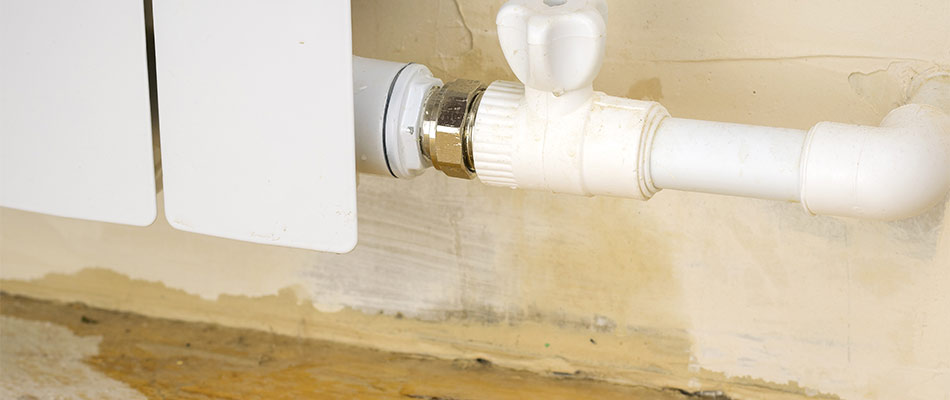Finding Concealed Water Line Leaks: Six Proven Techniques
Finding Concealed Water Line Leaks: Six Proven Techniques
Blog Article
Just about everyone has got their own unique theory on the subject of Detecting hidden plumbing leaks.

Early detection of dripping water lines can alleviate a possible disaster. Apart from saving you cash, it will certainly decrease the aggravation and also disappointment. The moment you discover a leak, calling your plumber for repair work is the most effective service. Some tiny water leaks may not be visible. Right here are some hacks that help if you can not spot it with your nude eyes.
1. Examine the Water Meter
Inspecting it is a surefire way that aids you find leaks. If it moves, that suggests a fast-moving leak. This means you may have a sluggish leak that might even be underground.
2. Check Water Intake
If you spot abrupt changes, regardless of your usage being the exact same, it means that you have leakages in your plumbing system. An unexpected spike in your bill suggests a fast-moving leak.
Meanwhile, a steady boost monthly, despite having the exact same habits, shows you have a sluggish leakage that's likewise gradually escalating. Call a plumber to extensively inspect your home, specifically if you really feel a warm location on your flooring with piping beneath.
3. Do a Food Coloring Examination
30% comes from commodes when it comes to water intake. Examination to see if they are running appropriately. Decrease specks of food color in the tank and also wait 10 mins. If the color somehow infiltrates your dish during that time without flushing, there's a leak in between the storage tank and bowl.
4. Asses Outside Lines
Don't neglect to examine your outside water lines as well. Must water leak out of the connection, you have a loosened rubber gasket. One little leak can squander heaps of water and also surge your water expense.
5. Inspect and Assess the Circumstance
Home owners should make it a behavior to check under the sink counters and also even inside cupboards for any type of bad odor or mold and mildew development. These two warnings show a leakage so punctual attention is needed. Doing regular inspections, even bi-annually, can conserve you from a significant trouble.
More notably, if you recognize your residence is currently old, keep a watchful eye on your heaters, hose pipes, pipes etc. Look for discolorations and damaging as many home appliances and pipes have a life span. They will likewise normally deteriorate because of tear and also use. Do not wait for it to escalate if you suspect leaking water lines in your plumbing system. Call a specialist plumber right now so you do not wind up with an awful mess in your home.
Early detection of dripping water lines can minimize a prospective calamity. Some tiny water leaks may not be noticeable. Examining it is a surefire means that helps you find leaks. One tiny leakage can lose heaps of water as well as increase your water expense.
If you suspect dripping water lines in your plumbing system, do not wait for it to intensify.
WARNING SIGNS OF WATER LEAKAGE BEHIND THE WALL
PERSISTENT MUSTY ODORS
As water slowly drips from a leaky pipe inside the wall, flooring and sheetrock stay damp and develop an odor similar to wet cardboard. It generates a musty smell that can help you find hidden leaks.
MOLD IN UNUSUAL AREAS
Mold usually grows in wet areas like kitchens, baths and laundry rooms. If you spot the stuff on walls or baseboards in other rooms of the house, it’s a good indicator of undetected water leaks.
STAINS THAT GROW
When mold thrives around a leaky pipe, it sometimes takes hold on the inside surface of the affected wall. A growing stain on otherwise clean sheetrock is often your sign of a hidden plumbing problem.
PEELING OR BUBBLING WALLPAPER / PAINT
This clue is easy to miss in rooms that don’t get much use. When you see wallpaper separating along seams or paint bubbling or flaking off the wall, blame sheetrock that stays wet because of an undetected leak.
BUCKLED CEILINGS AND STAINED FLOORS
If ceilings or floors in bathrooms, kitchens or laundry areas develop structural problems, don’t rule out constant damp inside the walls. Wet sheetrock can affect adjacent framing, flooring and ceilings.
https://www.servicemasterbyzaba.com/blog/how-to-detect-water-leakage-in-walls/

Hopefully you liked our piece on Hacks to detect leaks. Thanks a ton for spending some time to read through our article. Sharing is good. Helping people is fun. I thank you for reading our article about Locating water leaks.
Book Report this page